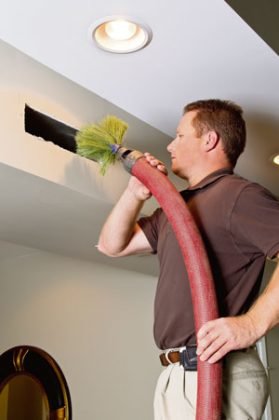 Winter can be dreary for people confined to indoors as temperatures drop, and poor air quality in a home can add to that dreariness while adversely affecting individuals’ health. To ensure the air inside a home stays healthy all year long, consider the following:
Winter can be dreary for people confined to indoors as temperatures drop, and poor air quality in a home can add to that dreariness while adversely affecting individuals’ health. To ensure the air inside a home stays healthy all year long, consider the following:
• Inspect and address any sources of carbon monoxide – carbon monoxide is an invisible, odorless gas that can contribute to poor indoor air quality and a host of health problems if it goes undetected. According to the U.S. Centers for Disease Control and Prevention, potential sources of carbon monoxide in a home include improperly vented natural gas appliances, such as stoves and water heaters, gas-powered tools that are used indoors, clogged chimneys or blocked heating exhaust vents. Men and women can periodically inspect potential sources of the gas and address any issues they find while also making sure all detectors are properly installed and functioning optimally.
• Inspect HVAC ducts – ductwork is used to deliver warm or cool air in homes with heating and air conditioning systems. The U.S. Environmental Protection Agency (EPA) notes that much of the dirt in air ducts adheres to the duct surfaces without ever entering living spaces. However, the EPA notes that homeowners should consider having their ducts cleaned if an inspection uncovers substantial visible mold growth. Homeowners should also consider cleaning if ducts are infested with vermin or clogged with excessive amounts of dust or debris.
• Avoid chemical cleaning products – chemical cleaning products may be great at disinfecting dishes, countertops and other areas in the home, but such items may be toxic and adversely affect indoor air quality. For example, chemicals such as bleach and ammonia, which are used in many commercial cleaning products, can linger in the air, irritating the eyes, nose, throat and lungs. Homeowners concerned about the quality of air in their homes should avoid scented products, such as air fresheners and scented detergents, which the National Institute for Occupational Safety and Health notes may release volatile organic compounds into the air.
• Inspect bathrooms for mold growth – mold can grow on surfaces that are routinely wet, and that makes poorly ventilated bathrooms common sources for home mold infestations. Mold can adversely affect indoor air quality when mold spores are released, potentially triggering allergic reactions, asthma attacks and respiratory conditions. After bathing in bathrooms without vents, men and women should open windows so the room dries before mold can grow. In bathrooms with vents, make sure vents are running during baths and showers and afterward until ceilings, walls and floors appear dry.
Comments
No comments on this item Please log in to comment by clicking here